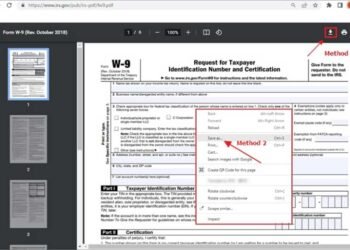Access to clean, temperature-controlled water is essential in today’s busy world. Whether you’re preparing a cup of tea, enjoying an ice-cold drink, or simply trying to stay hydrated, a hot and cold water dispenser can make life easier and more convenient. With so many types and features to choose from, finding the perfect dispenser for your needs can feel overwhelming. This blog will guide you through the benefits, features, and options available, helping you make an informed decision.
What Is a Hot and Cold Water Dispenser?
A hot and cold water dispenser is a device that provides instant access to both hot and cold water. It’s a modern convenience that eliminates the need for boiling water on a stove or waiting for chilled water in the fridge. These dispensers are common in homes, offices, and public spaces due to their efficiency, ease of use, and versatility.
Types of Hot and Cold Water Dispensers
- Freestanding Dispensers: Standalone units ideal for larger spaces like offices or breakrooms.
- Countertop Dispensers: Compact models that fit neatly on kitchen counters or small spaces.
- Bottleless Dispensers: Connected directly to your water supply for unlimited access.
- Bottled Water Dispensers: Use replaceable water jugs, typically 3 to 5 gallons.
Benefits of Hot and Cold Water Dispensers
Convenience
A hot and cold water dispenser offers unmatched convenience. Need boiling water for tea or instant noodles? It’s ready in seconds. Want a refreshing glass of cold water on a hot day? Just press a button. No more waiting for water to boil or chill.
Health and Hydration
These dispensers encourage better hydration habits by providing clean, great-tasting water at the perfect temperature. Many models include advanced filtration systems, ensuring you’re drinking water free from contaminants.
Energy Efficiency
Modern dispensers are designed to use minimal energy while maintaining optimal performance. Many models feature energy-saving modes, making them an eco-friendly choice.
Versatility
Hot and cold dispensers cater to a variety of needs, from preparing hot beverages to cooling down with icy water. Their sleek designs also make them a stylish addition to any home or office.
Choosing the Right Dispenser: Key Features to Consider
Temperature Options
Some dispensers offer adjustable temperature settings, allowing you to choose specific levels for your hot or cold water. This is particularly useful for tasks like brewing coffee at the right temperature or mixing baby formula.
Filtration System
Many dispensers come with built-in filtration systems to remove impurities. If water quality is a concern, opt for a model with a multi-stage filtration process for maximum purity.
Capacity
Consider how much water your household or workplace consumes daily. For heavy use, look for high-capacity models that can handle frequent demands without running out.
Maintenance
Easy-to-clean dispensers with removable drip trays and self-cleaning features simplify upkeep. If you choose a model with a filtration system, ensure the filters are easy to replace.
Comparing Hot and Cold Water Dispenser Types
Bottled Water Dispensers
- Pros:
- Easy to set up and portable.
- No plumbing required.
- Cons:
- Bottles need to be replaced frequently.
- Higher long-term cost for bottled water.
Bottleless Water Dispensers
- Pros:
- Unlimited water supply with consistent quality.
- Cost-effective over time.
- Cons:
- Requires professional installation.
- Initial setup can be expensive.
Countertop Dispensers
- Pros:
- Compact and space-saving.
- Affordable and easy to move.
- Cons:
- Limited capacity.
- May not work for high-traffic areas.
Freestanding Dispensers
- Pros:
- Large capacity suitable for offices or commercial use.
- Often feature advanced controls and safety locks.
- Cons:
- Takes up more space.
- Less portable.
Hot and Cold Water Dispenser Use Cases
For Homes
Hot and cold water dispensers are perfect for families. They make it easy to prepare meals, hot drinks, or chilled refreshments. A countertop or bottleless model can provide convenience while blending seamlessly into your kitchen.
For Offices
Dispensers encourage employees to stay hydrated and reduce reliance on single-use plastic bottles in workplaces. Freestanding or plumbed models are ideal for offices with high water consumption.
For Public and Commercial Spaces
Dispensers that cater to large groups benefit gyms, schools, and event venues. Look for durable, high-capacity units with easy maintenance features.
Environmental Considerations
Bottled Water Dispensers
While convenient, bottled dispensers generate plastic waste. If you choose this type, consider using recyclable water jugs to reduce your environmental impact.
Bottleless Water Dispensers
Bottleless models are the eco-friendliest choice, eliminating the need for plastic bottles and reducing the carbon footprint associated with transporting bottled water.
Maintenance Tips for Your Dispenser
Regular maintenance keeps your dispenser functioning efficiently and ensures clean, safe water.
- Clean Regularly: Wipe down the exterior, clean the water tanks, and remove any mineral buildup in the nozzles.
- Replace Filters: If your dispenser has a filtration system, replace the filters according to the manufacturer’s recommendations.
- Check for Leaks: Periodically inspect the unit for any leaks or damage to avoid water wastage.
- Descale When Needed: For plumbed dispensers, descaling prevents mineral deposits from affecting performance.
How to Decide Which Dispenser Is Best for You
The best hot and cold water dispenser depends on your unique needs:
- For families or small spaces: Choose a countertop or bottled dispenser.
- For high usage: A freestanding or bottleless model with a large capacity is ideal.
- For eco-conscious users: Opt for a bottleless dispenser to reduce waste and energy consumption.
Conclusion
A hot and cold water dispenser is a versatile, efficient solution for accessing clean, temperature-controlled water. Whether for home, office, or commercial use, the right dispenser can simplify your daily routines, encourage better hydration habits, and even save money in the long run. By considering your space, water consumption, and maintenance preferences, you’ll find a model that perfectly suits your needs.












